Harry Potter Story Structure of the Saga
Harry Potter Story Structure of the Saga
Exactly as novels, sagas can also have their plot developments based on narrative structures. Let’s see how this works with Harry Potter.
Before we start, beware that this whole article is one GIANT SPOILER. If you haven’t read all books, or seen all movies, I suggest that you continue with a lot of care. I have added spoiler windows for you to open before reading each section.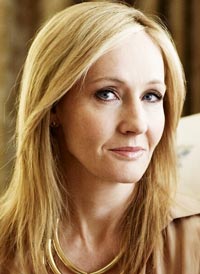
J. K. Rowling did a magnificent job in the development of the saga plot, as well as for all book main inner plots .
One important thing that I find about the Harry Potter Saga is to remember a significant detail about the Main Character and the Protagonist. No, they are not just different terms for the same story player.
The Main Character is that one player in the story that shares feelings and views with us.
The Protagonist is that player that pushes the story forward.
In my opinion, the character that drives the saga forward and sets the central motivation of the plot is actually an unexpected one:

The Protagonist of the saga is VOLDEMORT.
Additionally, the character that shares his point of view with the readers (audience);
The Main Character of the saga is Harry Potter.
One must not confuse these dramatic functions with their counterparts inside each of the books. Those can be and, in most cases, are different, depending on the novels.
For this reason, I think it serves better to our purposes to read about, and, then, investigate the
Saga Archetype Analysis
Psychological Conflict
Main Character = Harry Potter
Impact Character = Voldemort, Dumbledore
This conflict, between the Main and Impact characters, is fought on the psychological level and usually ends when one of them helps change the other character.
Story Development Functions
Driver Archetypes
Protagonist = Voldemort
Antagonist = Harry Potter
Guardian = Quirrel; Lucius Malfoy, The Basilisk; Wormtail; Junior and the Death Eaters; Fudge and the Ministry (unintentionally); Death Eaters; Death Eaters and Voldemort’s Army
The function of conscience does not exist for Voldemort. He simply does not have one. So, the only guardian-function he gets is HELP.
Contagonist = Snape; Dumbledore; Sirius Black and Lupin; The helping ghosts; Dumbledore, Snape, The Order, the centaurs; Dumbledore, Slughorn, The Order; Ron, Hermione, The Order, Dumbledore’s Army
Dumbledore, Hermione, and Ron have fluctuating contagonist-functions along all saga.
Note that Voldemort does not have a classic mentor in the saga. He is too Omnipotent for that. So, this figured is associated with Harry.
Dumbledore and the members of the Order, even before its formation, are Contagonists to Voldemort and Guardians for Harry.
Passenger Archetypes
Sidekick = Wormtail and some Death Eaters
This function overlaps with almost all, if not all, of his guardian figures listed above.
Usually, the sidekick represents support and faith. Well, some of Voldemort’s sidekicks have faith and adore him, but others just act more in fear of him.
Skeptic
Skeptic functions don’t necessarily need to relate to a particular driver character. It is important that incredulous players appear in the plot. The Skeptic figures are referred solely to Harry along the saga.
Reason = Voldemort, Junior
Also the usual characters from the books’ plots.
Emotion = Voldemort, Wormtail, Bellatrix
Also the usual characters from the books’ plots.
Following that, we should read about, and study the
Saga Dramatic Structure
Also called Narrative Structure, this type of analysis tries to fit the saga into a certain narratology model.
On this website, we have been using a hybrid between Christopher Vogler’s paradigm and, a 7-step development of the 4-act structure.
Act 1
Backstory flashbacks throughout all the novels show Tom Riddle’s story before the Trigger. This part of his life could be in itself a whole complete saga plot telling Voldemort’s ascension before Harry Potter.
Also, the first books have the objective of presenting new unknown characters to the public.
It is interesting to see how, Voldemort, starts as a hidden Protagonist, much like as if he were an antagonist. As he pushes the saga forward, his appearance grows up to being more and more noticeable and, finally, becomes evident.
The above evolution of appearance is typical to Antagonists, not protagonists, but works very well in J. K. Rowling’s inverted construction.
Trigger
Technically called Point of Attack, this plot point is where a problem occurs, waiting avidly to be solved by the Protagonist.
Flashbacks in all books and
 Harry Potter and the Sorcerer’s Stone
Harry Potter and the Sorcerer’s Stone
When Harry Potter survives and becomes “the boy who lived”, he sets up a problem for Voldemort. From this point on, Voldemort’s quest is to come back and destroy the boy with the objective of becoming the ruler of the Wizarding World.
Act 2
Second acts usually are a series os tests with a rising set of complications up to the point of a crisis before the Mid-Point.
Harry Potter and the Sorcerer’s Stone
First test and character presentations.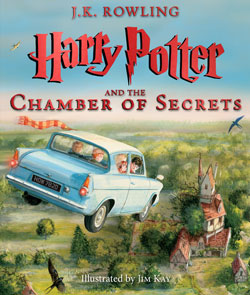
Harry Potter and the Chamber of Secrets
Second test and character presentations.
Harry Potter and the Prisoner of Azkaban
This book is a subtle third test in which, we just “hear” about Voldemort and his servant, who we see in short sequence. The Protagonist is driving the saga forward, but behind the scenes.
Harry Potter and the Goblet of Fire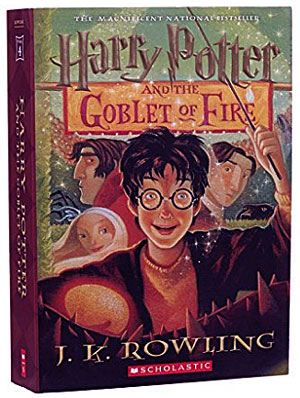
The last second-act test is the construction and execution of an elaborate plan to kill Harry Potter.
Voldemort’s failure to kill his antagonist is the CRISIS FOR THE PROTAGONIST in the saga.
Mid-Point
After a crisis, this is a point of clarification for the Protagonist.
 Harry Potter and the Order of the Phoenix
Harry Potter and the Order of the Phoenix
Voldemort discovers that he can manipulate Harry Potter’s mind and make him fetch a prophecy.
Act 3
This section usually marks a preparation phase, a recounting/retelling phase, or both. Basically, everyone prepares for the final climax. This moment is usually used to remember what has happened up until now.
Harry Potter and the Order of the Phoenix
While discrediting Harry Potter and Dumbledore, Voldemort sets free and prepares the Death Eaters to form a new army.
Some recounting is done during the Oclumency lessons and in the end by Voldemort and Dumbledore.
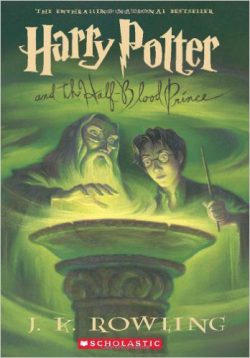
Harry Potter and the Half-Blood Prince
This novel is the continuation of the preparation phase. Recounting also occurs while Dumbledore and Harry investigate Voldemort’s past. When Harry investigates
When Harry investigates Snape’s past, we have a strong hint of his motives and about what he has been doing all along. Later in the saga, Dumbledore will explain it in more detail and set narrative closure for him.
Climax
The climax is the sequence where a final struggle between the Main Character and Impact Character, and between the Protagonist and Antagonist happens with an ending or closure.
Sub-plots-struggles like “Contagonist x Guardian”, and such, also may have closure near this point.
Harry Potter and the Deathly Hallows
Nothing much to say here. The whole book is one enormous climax with an internal plot structure.
The book is so full of comes and goes that the filmmakers were able to adapt it into two movies.
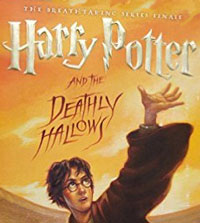
Act 4
The section is the closure section where everything is explained.
Harry Potter and the Deathly Hallows
Following some considerations already done in the previous two books, we have a final set of conclusions to wrap up the last loose ends.
It is important to note that we can find many sub-plots in the saga, and the books, which, by themselves, are sub-plots on their own.
Also, a curious mind could try to fit an analysis using Harry Potter, or even, Dumbledore as protagonists, and it might even work.
However, in my humble opinion, Voldemort is the saga driving-character.
You can reach the reviews for each book by clicking on their titles. Please, leave a comment with your opinion.


I’m currently writing a story and I’ve never thought of breaking my characters up like this. I feel like all my years of school have been lies lol. I always thought that the character the story was mostly revolved around was the protagonist and never thought to put them as the antagonist but it does make a lot more sense for it be the character that drives the story. I think will help me a lot when writing my characters. It’s a whole other way of think about it. Thank you!
Hello, MissAnimeGirl,
The Dramatica Theory model establishes 4 essential archetypes that, usually fall into 2 characters, in hero/villain stories:
Protagonist and Antagonist (story problem adversaries)
Main Character and Impact Character (intellectual adversaries)
When the Protagonist and the Main Character are the same, we have a HERO.
Following that logic, sometimes, authors blend the Antagonist and Impact Character to produce a VILLAIN.
The Protagonist is the story driver, but also, the character that evaluates the situation in order to solve a problem.
Voldemort drives the saga-plot forward, but not all the books’s plots and none of the sub-plots. Harry Potter (and friends) is usually the character that does most of the evaluation in the saga and in the books’ plots. J. K. Rowling splits the Protagonist functions between more than one character in most of the books and in the saga.
In other words, in the saga plot, we have a villain that carries a piece of the protagonist.
Also, we have a semi-hero, Harry Potter (and, sort of, his friends) since he is the Main Character (the eye of the audience) in all the plots and also carries a piece of the Protagonist.
When J. K. Rowling creates that kind of Complex Characters, and she does that increasingly in the saga, she is in fact doing something brilliant; She makes us feel that Harry Potter and Voldemort have a lot in common. It seems that they follow vary similar paths. That strategy is essential to the Prophecy and the Final Climax.
Please note that there are 6 more archetypes (which she fully abuses of in complex characters) in the Dramatica Theory that, along with the above, are briefly explained here:
Simple Dramatic Archetypes
You may also want to take a look at this: Dramatic Structure Diagrams
I hope this helps you further more. If you have any questions, please feel free to contact me.
Thanks for sharing your impressions and experience. Cheers!
Hey Caito,
I’m a big Harry Potter fan here, and I’m also currently writing a fantasy myself so this helps a lot. I’ve never thought of breaking my story the way you did here. I’ll be sure to look into this. 🙂 I can see how this can help in understanding the story better.
Thanks for sharing!
Cheers,
Anh
Hello, Anh,
Just don’t forget that you may set your plot following that linear structure, but you can always write the story presenting it any way you see fit. Not all stories need to follow a chronological line. You do not always show everything in the begining, especially the vilains chracter curve. Otherwise, you may lose the mysteries necessary to make it appealing. Thanks for sharing your thoughts. Cheers!